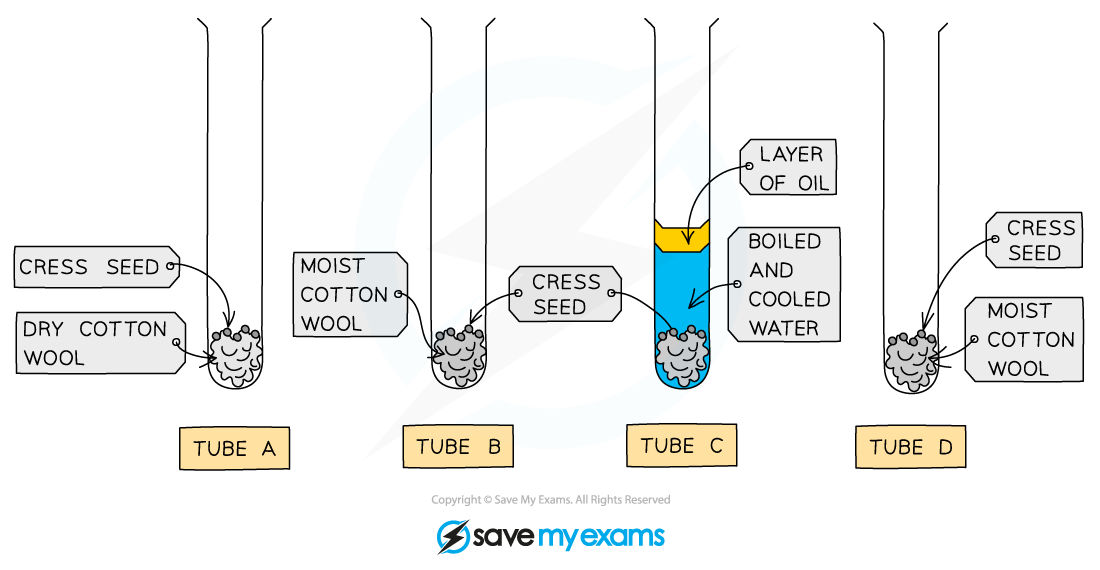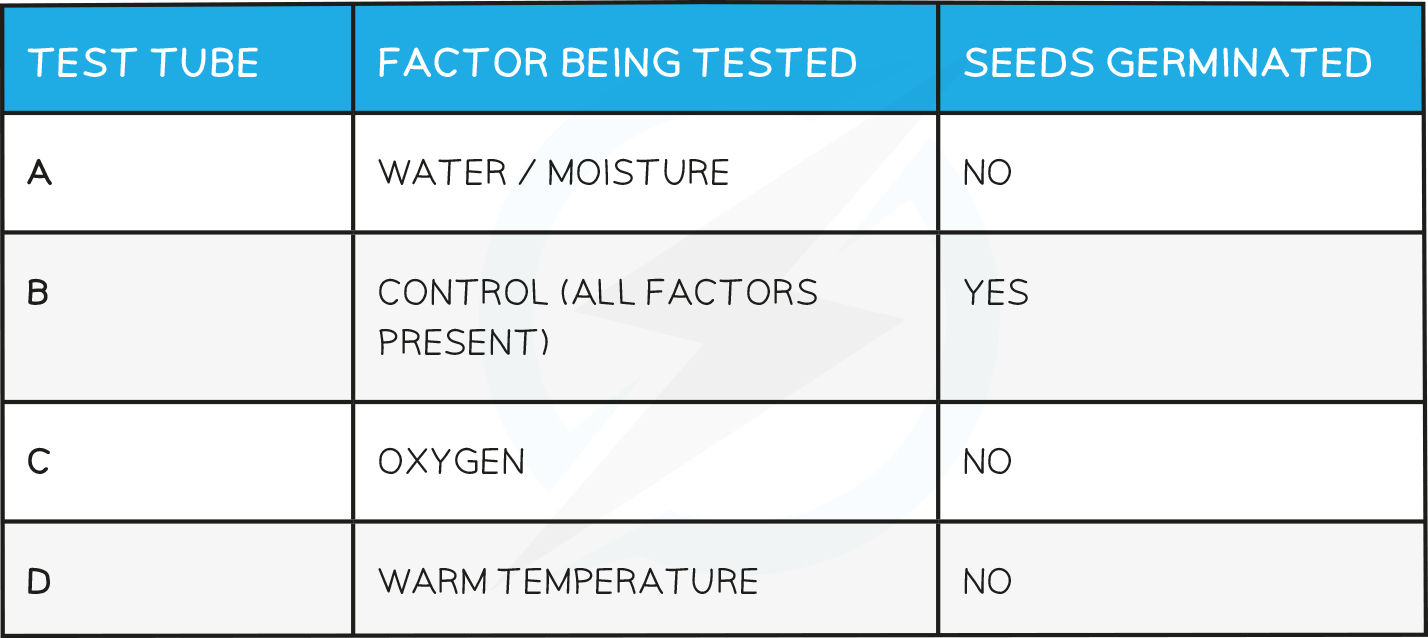- 翰林提供学术活动、国际课程、科研项目一站式留学背景提升服务!
- 400 888 0080
IB DP Biology: HL复习笔记9.4.4 Skills: Investigating Factors Affecting Germination
Experiments Investigating Factors Affecting Germination
- Seeds remain dormant long enough to allow seed dispersal or until conditions are favourable
- During dormancy the seed is unable to germinate and the metabolic rate is nearly zero
- Germination results in growth of the embryo shoot, or plumule, and embryo root, or radical
- Three factors are required for successful germination
- Water allows the seed to swell up, causing the seed coat, or testa, to burst; this allows the growing embryo plant to exit the seed
- Water also allows the enzymes in the embryo to function, increasing metabolic rate so that growth can occur
- Oxygen is required for respiration so that energy can be released for germination
- Warmth; germination improves as temperature rises (up to a point) as the reactions which take place are controlled by enzymes which cannot function effectively when temperatures are too low
- Note that as carbon dioxide is not necessary for germination but also does not inhibit it, it makes no difference whether it is present or not
- Water allows the seed to swell up, causing the seed coat, or testa, to burst; this allows the growing embryo plant to exit the seed
Gibberellin
- Gibberellin is a hormone required to trigger mitosis and cell growth in the plant embryo
- Production of gibberellin is stimulated by a metabolic pathway controlled by a series of enzymes
- The genes that code for the relevant enzymes need to be expressed before this metabolic pathway can become active
- Gibberellin can also stimulate production of amylase which breaks down stored starch into maltose
- Other enzymes break down the maltose further into soluble forms of sugar which can be transported around the embryo plant
- Starch is insoluble so cannot be transported without first being broken down
- Sugars from the broken down starch stores are required for respiration and growth of the cells in the embryo plant
- Other enzymes break down the maltose further into soluble forms of sugar which can be transported around the embryo plant
Crops and germination
- Germination rates for growers are an important factor in maximising crop yield
- In agriculture, crops are often selected for their short dormancy period to decease germination time
- Growers must consider
- Age of the seed; old seeds may be non-viable
- Depth of sowing seeds in the soil; too deep and the plumule may run out of energy before reaching the soil surface and too shallow may lead to the seed being eaten
- Water availability; both dry and waterlogged conditions could negatively affect germination
- Storage conditions; seeds may be damaged if stored incorrectly
- Damage by pests; some pests may eat or damage the seed itself while others may consume the growing plumule or radicle
- Temperature; many seeds need to be warm enough before germination occurs, but too much heat may cause damage, while some seeds need a period of extreme cold before germination can occur
Investigating the conditions for germination
- With germination being so crucial for effective crop farming it can be useful to investigate the factors that might effect its success
- We can use the following method to investigate the conditions required for successful germination
Apparatus
- Test tubes
- Test tube holder
- Cress seeds
- Cotton wool
- Fridge
Method
- Set up 4 test tubes, each containing 10 cress seeds on cotton wool
- Label the test tubes A, B, C, and D
- For test tube A, leave the cotton wool dry
- For test tube B, add enough water to the cotton wool so that it becomes moist
- For test tube C, add enough water to cover the cotton wool and seeds, then carefully add a layer of oil on top of the water
- For test tube D, add enough water to the cotton wool so that it becomes moist
- Leave tubes A, B and C at room temperature or incubated at a specific temperature e.g. 20 °C
- Place tube D in a fridge at approximately 4 °C
- Leave all tubes for a set period of time e.g. 3 - 5 days
- Ensure the cotton wool in tubes B and D remains moist throughout this time by adding more drops of water if required
- Compare the results and see which tube has the greatest number of germinated seeds

The ideal conditions for germination can be investigated by studying seeds under different conditions
Results and Analysis
- The test tubes are set up so that each of the factors required for germination (water, oxygen, and warmth) can be tested by selectively removing each in turn
- In test tube A water is removed
- Test tube B is the control tube where all factors are present
- In test tube C oxygen is removed as it cannot pass through the oil and water layers on top of the seeds
- In test tube D warmth is removed
- As germination cannot occur if the conditions are not right i.e. if even one of the three factors required is absent, it would be expected that only the seeds in the control tube will germinate
Conditions Required for Germination: Example Results Table

转载自savemyexams

早鸟钜惠!翰林2025暑期班课上线

最新发布
© 2025. All Rights Reserved. 沪ICP备2023009024号-1








